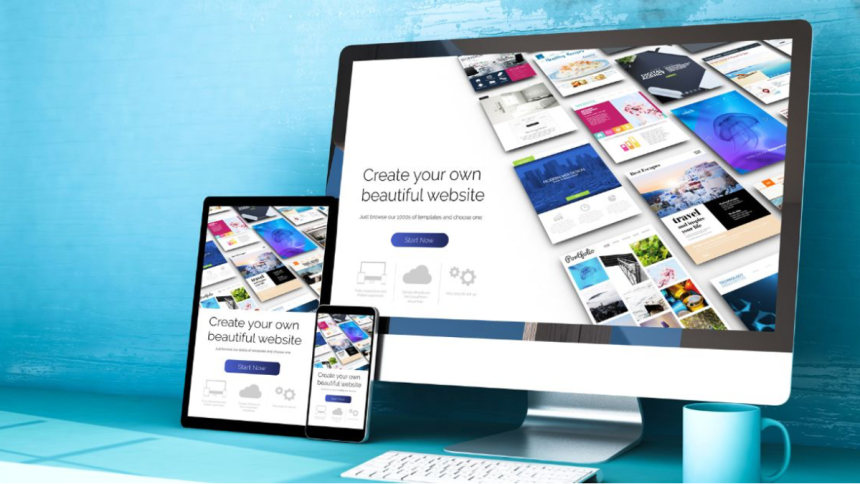Introduction to Website Design Services
In today’s digital-first world, your website serves as the foundation of your online presence. A professional website designer combines technical expertise with creative vision to build sites that attract visitors and convert them into customers. Unlike DIY website builders, a skilled designer creates custom solutions tailored to your specific business goals, target audience, and brand identity. For small businesses looking to compete online, investing in quality web design delivers measurable returns through improved user experience, higher search rankings, and increased conversions.
What Does a Website Designer Do?
Website designers handle all aspects of creating and optimizing your online presence. They begin by understanding your business objectives and researching your target audience. Using this information, they develop information architecture and user flows that guide visitors toward desired actions. Designers create visual mockups establishing your site’s look and feel before coding responsive layouts that work perfectly across all devices.
Many designers also integrate essential business tools like text message marketing for small business platforms, ensuring all your digital systems work together seamlessly. Beyond the initial build, professional designers provide ongoing maintenance, security updates, and performance optimization to keep your site running smoothly.
Key Benefits of Hiring a Professional
Working with an experienced website designer offers advantages that template-based solutions cannot match. Custom designs reflect your unique brand personality rather than looking generic. Designers implement conversion-focused layouts proven to increase leads and sales. They optimize every technical aspect for speed, security, and search visibility.
Professional designers also future-proof your site by building scalable architectures that can grow with your business. They ensure compatibility with all necessary integrations, from payment processors to CRM systems. Perhaps most importantly, they save you time and frustration by handling complex technical challenges behind the scenes.
Essential Skills to Look For
The best website designers possess a diverse skill set combining technical and creative abilities. Strong visual design skills ensure your site makes an outstanding first impression. Proficiency in HTML, CSS, and JavaScript allows for custom functionality. Experience with content management systems like WordPress enables easy updates.
Look for designers who understand UX principles to create intuitive navigation. SEO knowledge helps your site rank higher in search results. Business acumen ensures the design supports your revenue goals. For small businesses, find someone experienced with integrating tools like text message marketing for small business platforms to maximize customer engagement.
The Website Design Process Explained
Professional designers follow a structured process to deliver quality results. Discovery begins with in-depth discussions about your brand, audience, and objectives. Research follows, analyzing competitors and industry trends. Information architecture organizes content logically before visual design begins.
Designers create wireframes and prototypes for feedback before finalizing the look. Development brings designs to life with clean, efficient code. Rigorous testing ensures compatibility across browsers and devices. Launch includes final optimizations before going live. Post-launch, many designers offer training and ongoing support.
Cost Considerations for Small Businesses
Website design pricing varies based on project scope and designer experience. Basic brochure sites may cost 1,000−1,000−5,000, while e-commerce solutions typically range 5,000−5,000−20,000. Custom web applications can exceed $50,000. While this represents a significant investment, remember your website often generates far more in revenue.
Many designers offer phased approaches, starting with essential features and adding complexity over time. Some provide retainers for ongoing updates at predictable monthly costs. For small businesses, look for designers who understand budget constraints while still delivering quality.
Common Mistakes to Avoid
Choosing a designer based solely on price often leads to disappointing results. Similarly, selecting someone who only makes “pretty” sites without considering business goals wastes money. Avoid designers who don’t discuss mobile optimization or page speed.
Ensure your designer understands modern security requirements, especially if handling customer data. Verify they properly document their work for future updates. Most importantly, choose someone who listens to your needs rather than pushing cookie-cutter solutions.
Integrating Marketing Tools
Your website should connect seamlessly with other business systems. Professional designers incorporate email marketing platforms, CRM software, and analytics tools. For local businesses, integration with text message marketing for small business platforms can significantly boost customer engagement and repeat sales.
These connections turn your website into a powerful marketing hub that nurtures leads and automates follow-ups. Designers ensure all systems share data properly while maintaining privacy standards and delivering cohesive user experiences across channels.
Measuring Design Success
Quality designers establish key performance indicators before starting your project. Common metrics include conversion rates, average session duration, and pages per visit. E-commerce sites track revenue per visitor and cart abandonment rates.
Ongoing analysis identifies opportunities for improvement. A/B testing different layouts or calls-to-action can significantly boost results. Professional designers review analytics regularly and recommend optimizations to keep your site performing at its best.
Choosing the Right Designer
Start by reviewing portfolios for style and quality matches. Check client testimonials and case studies demonstrating business results. Look for designers experienced in your industry who understand your audience.
Interview candidates about their process and communication methods. Ensure they explain technical concepts clearly. Verify they understand modern requirements like accessibility standards and core web vitals. The right designer becomes a long-term partner in your digital success.
The Future of Website Design
Emerging technologies continue reshaping web design. Artificial intelligence assists with layout suggestions and content personalization. Voice interface optimization accommodates smart speaker users. Progressive Web Apps make sites work like native mobile applications.
Motion design and micro-interactions create more engaging experiences. Dark mode support and advanced typography push creative boundaries. Savvy designers stay ahead of these trends to future-proof your investment.
Conclusion: Your Website as a Business Asset
A professional website designer transforms your online presence from a basic necessity to a powerful business asset. Beyond aesthetics, they build strategic tools that attract ideal customers and guide them toward purchases. For small businesses, this expertise proves especially valuable in competitive markets.
When your website integrates seamlessly with all operations—including text message marketing for small business campaigns—it becomes your hardest-working employee, generating leads and sales around the clock. By investing in quality design today, you establish a foundation for sustainable digital growth tomorrow.
Lynn Martelli is an editor at Readability. She received her MFA in Creative Writing from Antioch University and has worked as an editor for over 10 years. Lynn has edited a wide variety of books, including fiction, non-fiction, memoirs, and more. In her free time, Lynn enjoys reading, writing, and spending time with her family and friends.















